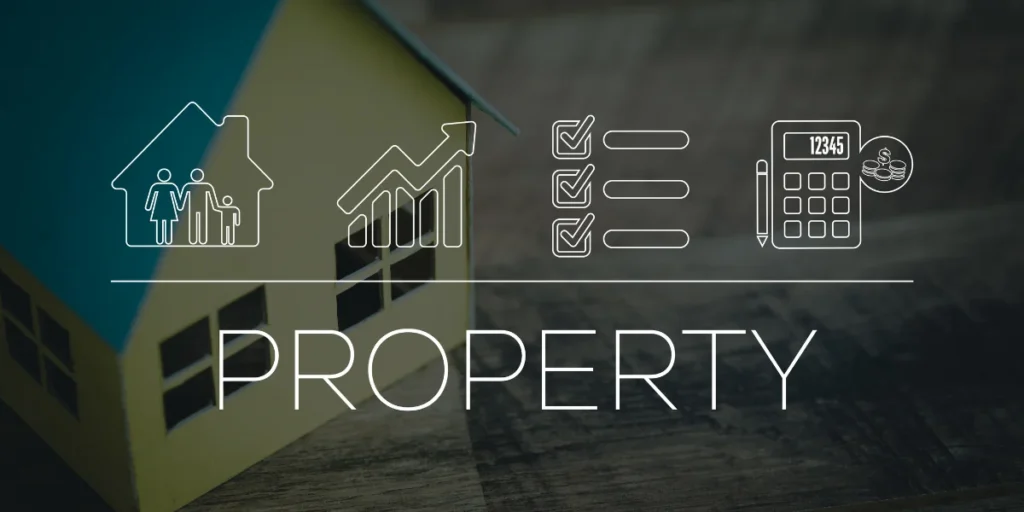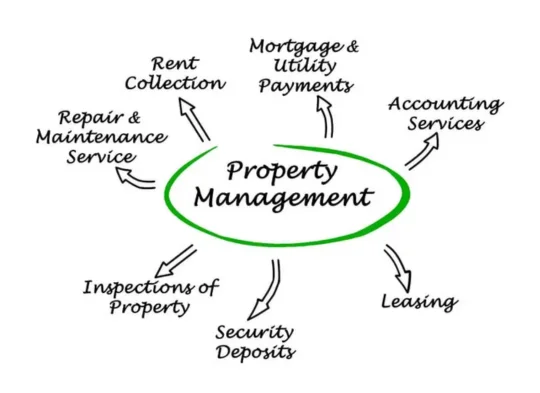Property transactions can get pricey when you don’t know real estate terms and abbreviations. Mixing up A-REITs with standard property investments or getting the Loan-to-Value Ratio (LVR) wrong could lead to expensive mistakes.
The property market uses its language. You’ll find complex ideas like negative gearing, Capital Gains Tax (CGT), and different cooling-off periods for each state. Learning real estate jargon goes beyond memorizing words – it helps you make smart investment decisions. Yield calculations and median prices are vital parts of property valuation.
This detailed guide explains 50 plus key real estate terms, helping property buyers, sellers, and investors confidently communicate the language of property deals.
Financial and Investment Real Estate Terminology
Success in property investment comes from learning key real estate abbreviations to financial concepts and terms. By becoming skilled at these real estate terms, you’ll make better decisions and get better returns on your investments.
Understanding Capital Growth and Appreciation

Capital growth shows how much a property’s value increases over time. This basic concept helps create wealth in real estate. For instance, a property bought for AUD 458,697 ten years ago might be worth AUD 764,495 today, giving you AUD 305,798 in capital growth.
Appreciation works the same way. Your property’s value rises because of several factors:
- Market demand and limited supply
- Economic indicators and inflation
- Location desirability
- Local developments (new amenities, transport options)
Real estate typically appreciates 3-5% annually, though rates vary significantly between different areas and periods.
Yield, ROI and Rental Returns Explained
Rental yield shows how much yearly income your property generates compared to its value. You’ll find two types:
Gross rental yield = (Annual rental income ÷ Property value) × 100
For instance, a property worth AUD 764,495 bringing in AUD 45,869 yearly rent gives you a gross yield of 6%.
Net rental yield = [(Annual rental income – Annual expenses) ÷ Property value] × 100
This calculation gives you a more accurate picture by including costs like insurance, rates, maintenance, and management fees.
Return on Investment (ROI) measures your profit as a percentage of cost. The cost method shows your ROI by dividing what you gained by your original costs. Your ROI would be 33% if your property gained AUD 76,449 in value and cost AUD 229,348, including purchase and renovations.
Gearing: Positive, Negative and Neutral
Gearing shows how much you borrow to invest and affects your cash flow and tax position:
| Gearing Type | Definition | Tax Implications |
|---|---|---|
| Positive | Rental income exceeds expenses and interest | Creates taxable income |
| Negative | Expenses and interest exceed rental income | Tax loss can offset other income |
| Neutral | Rental income equals expenses and interest | No effect on taxable income |
Capital Gains Tax and Property Investment
Capital Gains Tax (CGT) applies to profits from selling investment properties. You calculate it as the difference between your property’s cost base and sale price.
It’s worth mentioning that holding an investment property for more than 12 months makes you eligible for a 50% CGT discount. A profit of AUD 30,579 after 18 months means you’d only declare AUD 15,289 as capital gain in your tax return.
Equity and How to Use It
Equity represents the difference between your property’s market value and the remaining mortgage balance. Your equity grows as your property value increases, and you pay your mortgage.
Usable equity usually equals 80% of your property’s value minus your mortgage balance. If your home is worth AUD 611,596 and you have an AUD 336,377 mortgage, your usable equity would be AUD 152,899.
Investors use equity to:
- Buy more investment properties
- Fund renovations that increase property value
- Broaden investments into other assets
- Get funds without selling their property
The “rule of four” suggests that the maximum purchase price for an investment property should not exceed four times the usable equity.
Property Features and Descriptions
Property listings are complete with real estate terms and abbreviations that agents use to describe features quickly. You can avoid confusion throughout your search and save time by having a solid understanding of these phrases.
Common Property Feature Real Estate Abbreviations (AC, BIR, BSMT)
You’ll see these abbreviations a lot in property ads:
A/C or AC: Air conditioning shows the property has a cooling system installed.
BIR: Built-in wardrobes (or robes), giving you valuable bedroom storage space.
BSMT: Basement, a below-ground space that adds extra living or storage area.
F/F or F/furn: Fully furnished property, especially important in rental listings.
Fixtures are things like light fixtures or built-in appliances that are affixed to the property and cannot be removed without causing damage.
Fittings: Items you can remove without causing damage, such as curtains or free-standing appliances.
Room and Space Real Estate Terminology (BR, LR, FDR, MB)
Here’s what these standard room real estate abbreviations mean:
BR or Br: Bedroom, often shown with a number (3BR) to tell you how many there are.
LR: Living room, where everyone gathers in the home.
FDR: Formal dining room, a separate space just for dining.
MB: The main bedroom is usually the biggest bedroom with its bathroom.
5B/3B: Five bedrooms and three bathrooms, a quick snapshot of the property’s size.
Kit: Kitchen, sometimes written as “Grmet kit” (gourmet kitchen) to show it has high-end appliances and finishes.
Outdoor Features and Amenities (OSP, LUG, SLUG)
The outdoor spaces can substantially change property values and lifestyle options:
OSP: Off-street parking, letting you park away from public roads.
LUG: Lock-up garage, giving you secure vehicle storage.
SLUG: Single lock-up garage fits one vehicle.
DK: Deck, a raised outdoor platform.
Pl: Swimming pool, which adds great value in warmer climates.
Gard or Gdn: Garden area, ranging from basic landscaping to extensive grounds.
Building Materials and Construction Real Estate Terms and Abbreviations (BV, WB, SB)
These terms help you know how the property is built and how durable it might be:
BV: Brick veneer, with brick on the outside and timber frame inside.
WB: Weatherboard, timber cladding on external walls.
SB: Solid brick construction; walls are built entirely of brick.
CF: Concrete floor, standard in newer builds.
Conc: Concrete is used in various parts of the construction.
Rend: Rendered exterior, walls covered with cement mixture for a smooth finish.
Heating and Cooling Systems (HVAC, CAC, RC)
Climate control features affect your comfort and running costs:
HVAC: Systems for heating, cooling, and ventilation that regulate the temperature all year long.
CAC: Central air conditioning, cooling the whole home.
RC: Radiant cooling or reverse cycle air conditioning, the latter being energy-efficient for heating and cooling.
D/H: Ducted heating and warm air flow through ceiling or floor ducts throughout the home.
Evaporative coolers: Systems that cool air using water evaporation work best in low-humidity areas.
These property terms are a great way to make smarter decisions about listings. You’ll spot properties that match your needs quickly and save lots of time in your search.
Legal and Contractual Real Estate Terms
Legal terms play a vital role in property deals. These terms shape the rights and obligations of buyers and sellers. Learning everything in real estate terminology will protect your interests throughout your property trip.
Caveat and Caveat Emptor
A caveat is a formal notice filed with the land title office to show someone’s interest in a property. This notice can stop certain activities on a property’s title without the caveator’s approval and warns others about existing claims.
Caveat emptor also refered to as (“let the buyer beware”) is a basic property law principle. Buyers must get a complete picture before purchasing. On top of that, sellers don’t have to disclose every property issue. All the same, there are exceptions like:
- Fraud or active concealment of defects
- Misrepresentation of property features
- Consumer protection laws in certain jurisdictions
Easements and Encumbrances
Easements let specific parties use parts of your land for certain purposes. Common examples include:
- Shared driveways with neighbours
- Utility access for water pipes or electrical lines
- Rights of way for property access
Encumbrances limit property title or use more broadly. These go beyond easements to include:
- Financial claims such as mortgages
- Building restrictions on size, style, or materials
- Special rates and taxes attached to the land
Title Types: Torrens, Strata and Company
Torrens – Full ownership of land and buildings
The most common type is absolute ownership, with clear boundaries
Stratra – Individual unit plus a share of common property
Used for apartments/units; managed by body corporate; shared maintenance costs
Company – Shares in a company that owns the property
Less common: ownership of shares, not property directly; potentially more problematic to finance
Conveyancing and Settlement Real Estate Terms and Abbreviations
Conveyancing legally transfers property ownership. Licensed conveyancers or solicitors handle this process. They conduct searches and prepare legal documents.
Settlement happens when ownership officially changes hands, usually 30-90 days after contract exchange.
Cooling-Off Period and Contract Exchange
Contract exchange makes the agreement legally binding when both parties swap signed contracts. Buyers typically pay a deposit at this stage.
The cooling-off period gives buyers time to back out after contract exchange:
- In NSW: 5 business days
- In Victoria: 3 business days
- In Queensland: 5 business days
Note that cooling-off periods don’t apply to auction purchases or when waived via a certificate. Buyers who withdraw during this time usually pay a penalty of about 0.25% of the purchase price.
Property Types and Ownership Structures

Real estate property ownership comes in many forms. Each type has its features and affects investors differently. You must understand these structures to navigate property purchases and manage investments well.
Residential Property Types (SFH, Apartment, Unit)
SFH (Single-Family Home) is a standalone, detached house built for one family. These properties give owners more privacy, space, and design freedom. SFHs usually hold their value better than other residential types. The homeowner must handle all maintenance costs.
Apartments are units within larger buildings where owners share walls and common spaces. Many buildings offer shared amenities like gyms or pools. Residents split maintenance costs through body corporate fees.
Units (or condominiums) blend private ownership with shared responsibility. The owners have few maintenance duties and share costs for exterior upkeep, roofing, and building amenities.
Commercial and Investment Properties (CRE, A-REIT)
CRE (Commercial Real Estate) includes office towers, retail spaces, industrial buildings, and social infrastructure like healthcare facilities. These properties usually secure longer leases between 3-20 years with fixed yearly increases.
A-REITs (Australian Real Estate Investment Trusts) are listed investment vehicles that give access to commercial property assets. Small investors can now buy into large commercial properties that were once out of reach. A-REITs make money through capital growth and regular monthly or quarterly income payments.
Ownership Structures and Body Corporate
A Body Corporate (or Owners Corporation) forms automatically when land splits with common property. This legal entity looks after shared areas in residential complexes. It maintains common property, handles insurance, and enforces by-laws.
After purchase, lot owners become members of the corporate body. They share legal and financial duties. Elected lot owners form committees to make daily decisions.
Strata Title vs Company Title
Strata Title – Direct ownership of unit plus a share of the common property Most common; clear structural diagrams; transparent system; typically higher value
Company Title – Shares in a company that owns the building Less common; shareholders receive right to occupy; may restrict sales or leasing; often lower purchase price
Freehold vs Leasehold Properties
Freehold ownership means you own the property and land outright with no time limit. Freeholders ultimately control their property but must handle all maintenance.
Leasehold means owning a property for a set time (usually 90-999 years) while leasing the land from the freeholder. When the lease expires, unless it is extended, the property returns to the freeholder. Unlike freehold, leaseholders pay ground rent and service charges. They might need landlord approval for property changes.
Buying and Selling Process – Real Estate terms and Abbreviations
Property transactions rely on several methods and procedures, which are the foundations of buying and selling. Buyers and sellers who understand these real estate terms and abbreviations can confidently direct their negotiations.
Appraisal vs Valuation
These two ways to assess property value serve different purposes:
Property appraisal gives you an informal estimate of your property’s value. Real estate agents usually provide this service free of charge. Though not legally binding, it gives a helpful snapshot of the market when you plan to sell or renovate.
On the other hand, a property valuation gives you a formal, legally binding assessment from a licensed valuer. You’ll need this for mortgage applications with banks. Courts also use these for proceedings, deceased estates, and divorce settlements.
Auction Terminology (Reserve Price, Passed In)
The lowest amount a seller will take at auction is known as the reserve price. Everyone is informed when a property becomes “on the market” by this private individual.
If bids don’t reach the reserve price, a property is passed in. The highest bidder then gets the first chance to negotiate with the seller, which puts them in a great spot to buy below the seller’s original expectations.
The auction world uses other terms, too. Vendor bids come from the auctioneer for the seller. The fall of the hammer signals the auction’s end and knocked down means bidding has finished.
Listing Types (Exclusive, Open, Off-Market)
An exclusive listing lets one agent sell your property for a set time. This approach gives you focused marketing and personal attention.
Open listings allow multiple agents to market your property at once. Only the agent who makes the sale gets paid. You get more exposure this way, but agents might not give it their full attention.
Off-market sales happen without public advertising. Sellers get privacy, and buyers face less competition. Adam Sorrell, Director of OBrien Rowville, says these work well “for individuals in sensitive situations or high-profile sellers who wish to avoid public attention”.
Buyer and Seller Representatives (ABR, BA)
An Accredited Buyer’s Representative (ABR) works directly with buyers throughout their home purchase. This title needs special education and proof of at least five deals as a buyer’s agent.
Buyer’s agents help find properties and handle negotiations. Seller’s agents work for vendors and showcase properties to potential buyers.
Offer and Counter-Offer Process
Negotiations start when buyers make their offer verbally or in writing. Sellers can accept, reject, or return a counteroffer with different terms.
Both parties go back and forth until they agree or someone walks away. Buyers might pay an expression of interest deposit to show they’re serious. This money stays refundable until both sides exchange contracts formally.
Mortgage and Lending – Real Estate Terminology
Property financing is the lifeblood of real estate purchases. Specific mortgage terminology plays a vital role in getting the best deals. Becoming skilled at these real estate terms and abbreviations helps borrowers navigate lending options.
Loan Types and Structures (IO, P&I)
Principal and Interest (P&I) loans simultaneously require payments for the borrowed amount and interest charges. The original repayments mainly cover interest but gradually move toward reducing the principal. This approach leads to:
- Lower overall interest payments
- Faster equity building
- Complete ownership at loan completion
Interest-only (IO) loans require only interest payments for a set period, usually 1-5 years. The payments then automatically change to P&I with higher amounts. While IO loans start with lower fees, they cost more in total interest.
Interest Rates: Fixed vs Variable
Fixed interest rates stay the same for a set period. This gives payment certainty and shields against rate increases. Variable rates change with market conditions and might decrease during economic downturns.
| Rate Type | Advantages | Disadvantages |
|---|---|---|
| Fixed | Payment predictability; Protection against rises | Less flexibility; Potential break costs |
| Variable | Potentially lower rates; Additional features | Payment uncertainty; Exposure to increases |
Loan-to-value ratio (LVR) and Deposits
LVR shows the loan amount as a percentage of the property’s lender-assessed value. For example, borrowing AUD 611,596 for a property valued at AUD 764,495 creates an 80% LVR.
Lenders consider an LVR above 80% to be a higher risk. Lower LVRs usually result in better interest rates and help avoid extra insurance costs.
Lender’s Mortgage Insurance (LMI)
LMI protects the lender—not the borrower—if loan payments stop and property sale proceeds don’t cover the remaining balance. Loans with LVRs above 80% typically need this coverage.
The one-off, non-refundable premium depends on your deposit size and loan amount. However, some professions might qualify for LMI waivers.
Bridging Finance and Line of Credit (LOC)
Bridging loans give short-term financing (up to 12 months) when buying a new property before selling an existing one. You’ll usually make interest-only payments on both properties during this time.
A Line of Credit (LOC) works like a credit card secured against property equity. You can borrow repeatedly up to a set limit and pay interest only on the money you use. Property investors and renovators find this flexible setup helpful for accessing equity without refinancing.
Property Management – Real Estate Terms

Property managers need to understand specialized real estate terminology to manage landlord-tenant relationships and maximize investment returns. These real estate terms and abbreviations are the foundations of running successful rental properties.
Rental Agreement Terminology
A residential tenancy agreement (previously known as a lease) serves as the legal contract between tenants and rental providers. You’ll find three main types of these agreements:
- Fixed-term agreements: Last 6-12 months but can go up to 5 years
- Periodic agreements: Run month-to-month without an end date
- Long-term contracts: Run beyond 5 years and provide better security
The law requires most agreements to follow specific forms that list rent amounts, payment options, bond requirements, and special real estate terms. Unlike buying property, rental contracts don’t have a cooling-off period, so understanding the terms before signing is vital.
Bond and Security Deposits
A rental bond is a security deposit tenants pay when moving in. The government usually holds this money. Current rules limit bonds to:
- Four weeks’ rent for standard properties
- Two weeks’ rent for moveable dwellings
- Three weeks’ rent for moveable dwellings with electricity
Rental providers should send bonds to the right government authority within 10-14 days of receiving them. If tenants don’t owe money for damages or rent, they get their bond back when they move out.
Vacancy Rates and Rental Yields
The vacancy rate shows the percentage of rental properties that sit empty. Here’s how the market breaks down these rates:
| Category | Rate | Market Conditions |
|---|---|---|
| Tight | 0-2.5% | High demand, limited options for renters |
| Healthy | 2.6-3.5% | Balanced market conditions |
| Weak | 3.6%+ | Oversupply, favourable for tenants |
Australia’s national vacancy rate hit a record low of 1.0% in January 2023, pushing rental prices up considerably.
Property Valuation Concepts
Property valuation covers several different methods for determining a property’s worth in the market. A proper value assessment requires an understanding of real estate terms and abbreviations that shape property pricing and investment choices.
Market Value vs Sale Price
Market value shows what a property might be worth based on what an informed buyer would pay a willing seller under normal conditions. The sale price, however, shows the actual amount paid during the property transfer. These numbers often differ because market demand, buyer emotions, and negotiation skills create gaps between the estimated value and final transaction price.
Comparative Market Analysis (CMA)
A CMA helps estimate property value by looking at properties with similar features that sold in the same area. Real estate agents usually:
- Pick three comparable properties sold in the last 3-6 months
- Make adjustments based on features, size, and condition
- Look at current market trends
This method gives you a realistic value estimate that matches current market conditions.
Depreciation and Depreciation Schedules
Property investors can claim tax deductions for wear and tear through depreciation. A quantity surveyor creates a depreciation schedule that shows the following:
- Capital works deductions at 2.5% of construction costs yearly over 40 years
- Plant and equipment depreciation based on how long items last
- Items worth less than AUD 458.70 claimed right away
Properties built after July 1985 qualify for capital works deductions, though different rules apply to properties bought after May 2017.
Building Inspections and Reports
Building inspection reports check a property’s condition before purchase and point out:
- Structural problems like rising dampness, cracks, or roof issues
- Safety risks that need fixing
- The state of available areas, including interior, exterior, roof space, and under-floor sections
These reports might cost hundreds but can save thousands by finding problems early.
Real Estate Industry Professionals
Property deals work best when qualified professionals help buyers and sellers through complex processes. Understanding these real estate terms and abbreviations lets you find the right experts to guide your property purchase or sale.
Real Estate Agent Certifications (CPM, CRS, GRI)
Professional designations show specialized training and expertise. Certified Property Manager (CPM) holders are experts in property management who prove their worth to employers, owners, and investors. Certified Residential Specialist (CRS) is the highest credential residential sales agents can earn. CRS holders earn three times more in income and transactions than other REALTORS®. The Graduate, REALTOR® Institute (GRI) designation shows advanced training in legal issues, technology, professional standards, and sales processes.
Property Valuers and Appraisers
Property valuers determine residential, commercial, or industrial property values through formal, legally binding reports. Certified Practicing Valuers must complete accredited qualifications and meet the Australian Property Institute’s academic standards.
Property appraisals are different from valuations. Real estate terms and abbreviations provide appraisals based on market knowledge, while valuations are detailed assessments by certified professionals that often cost more than AUD 611.60.
Conveyancers and Solicitors
Conveyancers handle legal aspects of property ownership transfers. Solicitors have broader legal expertise beyond property deals. Both can manage conveyancing, but with one key difference: solicitors can work across all Australian states, while conveyancers must stay in their licensed state.
Property Development Terms

Property developers need specialized real estate terms and abbreviations to reshape land development. These concepts shape investment opportunities and regulatory requirements.
Zoning and Planning Regulations
Zoning laws control land usage within designated areas. Local jurisdictions divide zones into residential, commercial, industrial, agricultural, and public categories. Property values depend on these regulations that prevent clashing land uses between neighbouring areas. Mixed-use zoning creates buffer zones near business districts.
Development Approval Process
The development application (DA) requires permission from the local authority before construction starts. The process has these steps:
Pre-lodgement meetings with planning teams to understand requirements Application assessment against relevant planning frameworks
Public consultation when projects might affect nearby properties. Final decision on approval or modification requests
Approval of standard developments under AUD 10.70m takes 90 days, and that of significant developments above this amount takes 120 days.
Off-the-Plan (OTP) Purchases
Off-the-plan buyers purchase properties before completion. Vendors must give buyers a disclosure statement with key details, including contract sunset dates after December 2019. Buyers get a 10-day cooling-off period instead of the standard 5-day period for existing homes.
Buyer protection requires deposit money to stay in trust accounts during the contract period.
Subdivision and Land Development
Subdivision splits land into smaller lots with individual titles. Developers must complete these steps:
- Title searches and property assessment
- Engaging licensed surveyors to prepare plans
- Council certification of subdivision plans
- Obtaining construction certificates
- Meeting all development conditions
Building Codes and Compliance
The National Construction Code (NCC) sets minimum safety, health, and sustainability standards. The code has three main volumes:
| Volume | Coverage | Application |
|---|---|---|
| BCA Vol. 1 | Class 2-9 buildings | Commercial, industrial |
| BCA Vol. 2 | Class 1 and 10 | Houses, sheds, carports |
| PCA Vol. 3 | Plumbing and drainage | All building classes |
These codes protect property values and help avoid legal issues while ensuring safety.
Conclusion – Real Estate Terms and Abbreviations
Real estate terms are the foundations of successful property deals. Each of the real estate terms and abbreviations plays a unique role in the property-buying process. Stakeholders who understand real estate jargon can make smart decisions and avoid costly mistakes.
Investment decisions rely on financial terms like LVR, CGT, and ROI. Property listings become more transparent with feature abbreviations such as BIR, AC, and OSP. Legal terms like caveat emptor and easements protect everyone’s interests during deals. Professional titles define what experts do, from CPM-certified managers to CRS-qualified agents.
Property type labels help separate different investment choices—from traditional SFHs to sophisticated A-REITs. Development terminology creates a structure for property changes. Everything from zoning rules to building standards falls under this umbrella.
Real estate terms and abbreviations gives buyers, sellers, and investors the knowledge they need in property markets. People who become skilled at using real estate jargon to communicate better with professionals, and their confidence grows with each property decision they make.
What does BV stand for in property listings?
BV stands for Brick Veneer, a construction method where the exterior walls have a brick outer skin with a timber frame behind. This is a common building style in many Australian homes.
What is the difference between a property appraisal and a valuation?
A property appraisal is an informal estimate provided by real estate agents based on market knowledge, while a valuation is a comprehensive, legally binding assessment conducted by certified professionals. Valuations are typically more detailed and often required by lenders for mortgage purposes.
How does negative gearing work in property investment?
Negative gearing occurs when the expenses and interest on an investment property exceed the rental income. This creates a tax loss that can be offset against other income, potentially reducing the investor’s overall tax liability. It’s a strategy often used by high-income earners seeking tax deductions.
What is the cooling-off period when buying a property?
The cooling-off period is a brief window after the contract exchange during which buyers can withdraw from the purchase. In most Australian states, standard property purchases typically take 3-5 business days. However, it doesn’t apply to auction purchases or when waived via a certificate.






